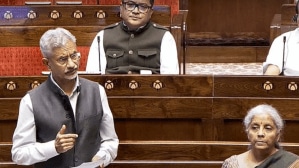Residents question Punjab’s ambitious land pooling policy: ‘Why expand when what’s already been built remains empty?’
The Punjab Government recently introduced the land pooling policy to build townships by acquiring land from farmers through pooling.
 Residents, activists, and even political leaders are pointing to several Punjab Urban Development Authority (PUDA)-approved projects that have either failed to attract buyers or remain stalled for over two decades.
Residents, activists, and even political leaders are pointing to several Punjab Urban Development Authority (PUDA)-approved projects that have either failed to attract buyers or remain stalled for over two decades.As the Punjab Government moves forward with its ambitious land pooling policy—aiming to acquire over 65,000 acres from 164 villages, with Ludhiana alone accounting for over 24,000 acres—a rising chorus of voices is questioning the rationale behind acquiring more farmland for urbanisation when many existing housing projects lie unfinished or completely abandoned.
Residents, activists, and even political leaders are pointing to several Punjab Urban Development Authority (PUDA)-approved projects that have either failed to attract buyers or remain stalled for over two decades.
Most of the abandoned projects were planned under the optimised utilisation of vacant government land rather than acquiring farm land.
Projects on paper, but ghost towns on the ground
Take the example of Lala Lajpat Rai Enclave in Jagraon—a PUDA-approved colony built in 2009 on 113 acres of land that previously housed the Jagraon Sugar Mill.
“The cooperative sugar mill was shut in the mid-1990s. In 2009, the then SAD-BJP Government launched this residential project. While many plots were auctioned, today the colony is deserted—just three or four houses exist. There’s no resale market, and many plots remain unsold,” said Didar Singh Dhillon, a resident of Malak village in Ludhiana district. “Close to this colony, the Punjab Government plans to acquire 530 acres of fertile land of the Malak, Aligarh and Pona villages for so-called urbanisation”.
The colony has roads, electricity poles, and infrastructure, but no residents.
“When even an approved colony with amenities finds no takers, what’s the point of creating more such colonies by making farmers landless?” Dhillon asked.
Mansa: Gates locked, grass overgrown
A similar fate awaits a 52-acre PUDA enclave in Mansa, located just 4 km from the main city on the Mansa–Barnala road. “This is a gated colony where the gates are always locked. Wild grass grows over empty plots. Roads and electricity poles exist, but nobody lives there. Plots were sold, but now no one wants to buy,” said Gurlabh Singh Mahal, an advocate and local resident.
Ironically, while this colony decays, the Government plans to acquire 125 more acres in Mansa under the land pooling policy. Mahal points to another project: “Over 100 acres were acquired for a Punjab Technical University campus on the Mansa–Sardulgarh road during SAD-BJP’s second term (2007–2012). That land too lies unused. Why not urbanise that first?”
Bathinda: Phases started in 2011, still incomplete
In Bathinda, phases 4 and 5 of the Urban Estate launched in 2011 are still incomplete. “Even today, some parks are not developed. The basic civic infrastructure is unfinished,” said Sarup Singla, Bathinda district BJP president. Despite this, the Government has now notified 894 acres in Bathinda under the land pooling policy—raising concerns about priorities and planning.
Muktsar: only walls, no allottees
In Muktsar, another PUDA colony—announced during SAD-BJP’s second term—exists only as a boundary wall and a gate. Plot demarcation is complete, but not a single plot has been allotted. These projects fall under the jurisdiction of the Bathinda Development Authority, which also oversees urbanisation plans in Mansa, Faridkot, Fazilka, and Muktsar.
Ludhiana’s PUDA-approved private colonies also struggling
Even private colonies approved in the Dakha, Jagraon Assembly constituencies of Ludhiana under previous development drives are in limbo. In Bhanohar village, one such colony spread over 100 acres has barely three-four families residing and Bhanohar comes under the current land pooling policy.
“This colony has existed for over 15 years. It’s nothing but demarcated and sold plots. If the Government really wants to urbanise, they should revive such projects where investors’ hard-earned money is stuck,” said Gurlabh Singh Mahal, adding that ignoring dead projects while acquiring fertile land would send the wrong signal to farmers.
Punjab’s land pooling push
The Punjab Government recently introduced the land pooling policy to build townships by acquiring land from farmers through pooling, rather than outright purchase. Farmers contributing land will receive a portion back as developed plots, with the rest sold to finance civic infrastructure.
While as per the Government, the policy is a “win-win” initiative for landowners and the state, it has sparked intense opposition in villages across Punjab. Farmer unions and resident groups say the policy is an attempt to forcibly urbanise fertile land, while older urbanisation efforts have failed to deliver on their promises.
“CM Bhagwant Mann on Sunday visited village Libra of Samrala constituency just to project that he is meeting villages amid protests against land pooling policy. But Libra village doesn’t come under the land pooling policy… The CM must visit the villages where over 50 per cent land is under the land pooling policy and that too after announcing his visit, rather than making hurried visits for social media presence,” said Pritpal Singh Baliawal, a BJP spokesperson.
With mass protests, resolutions passed by gram sabhas, and even posters banning leaders of the ruling AAP in villages, the Government faces increasing pressure to complete or revive its existing projects before seeking more land under its urbanisation agenda.












